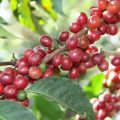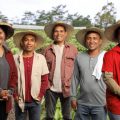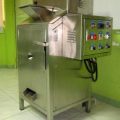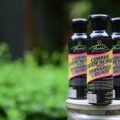Time was when the coffee of Batangas was the coffee of commerce of the world. Historical accounts tell of the unparalleled wealth of the coffee-growing families in Lipa of the 19th century in the remaining decades of Spanish colonial rule. This was most pronounced when the Philippines became the world’s major producer of coffee in the mid-1880s as the crop from the major coffee-producing plantations of Brazil, Africa, and Java failed because of the airborne fungal virus, Hernileia vastatrix, the cause of coffee rust, that made coffee a scarce commodity in the world market.
Those were the golden years of Batangas coffee and a period of great prosperity and opulence for Lipa. The town became the richest municipality in the Spanish colony and, for this feat, was declared the city of Villa de Lipa by royal decree in 1887. There was international preference for Philippine coffee with beans shipped to America and Europe commanding five times the price of those coming from other Asian countries. Those heady times did not last very long as Batangas coffee fell from its lofty height with a thud in 1889 with the arrival of the dreaded coffee rust in the province.
The romance of Batangas coffee began with its gradual introduction to the province beginning in the middle of the 18th century with importations of planting materials from Mexico and, in the next century, from Brazil. The Kapeng Barako that we know took form in the 19th century when coffee was widely planted in Lipa such that by the mid-1800s about two-thirds of the municipality was planted to the crop. By the 1860s, Batangas was already exporting its Kapeng Barako to the Americas via San Francisco and, later on, to Europe with the opening of the Suez Canal.
The word barako comes from the Spanish word for wild boar, varraco, which is said to have a taste for the Coffea liberica plant’s leaves and berries. Liberica coffee is also associated with the Batangueños’ trait of being matapang because of its strong flavor and distinct aroma. With this association, Liberica coffee came to be called “Kapeng Barako”.
Batangas coffee gained so much of a reputation that all coffee coming from the province were called “Kapeng Barako” regardless of the variety. But to the Batangueños and true-blue connoisseurs, it can only be C. liberica. Today, Kapeng Barako is considered part and parcel of the Batangueño culture.
Of the coffee varieties that are grown in Batangas and other coffee-growing areas in the country (Coffea arabica, C. robusta, C. excelsa, and C. liberica), C. liberica is different. In the international coffee trade, it is rarely seen as it accounts for less than one percent (<1%) of total coffee products. It is also grown commercially in Asia in Malaysia and, to lesser extents, in Indonesia, Thailand, Vietnam, and Taiwan. As with the Philippines, Liberica coffee is not exported by Malaysia with production coming from small farms that cater to niche markets such as tourists and the local café crowd.
C. liberica has the largest leaves and coffee beans of the four varieties. The bean is asymmetrical, with one end being smaller than the other. It also has a skin that is more resistant to peeling. Liberica coffee can grow in a wider range of soil types than the others. It is also taller and can reach a height of 17 meters. Owing to its resilience, it is sometimes used as rootstock for C. arabica and C. robusta seedlings. It was once thought to be resistant to coffee rust, but the experience of Lipa in the 1890s showed otherwise.
Kapeng Barako in coffee revival
In just two years after the coffee rust invasion of 1896, the country’s coffee output fell to one-sixth of its peak level. Since the fall, the produce from C. liberica never regained its pre-eminent position in the Philippine’s coffee industry again.
The coffee rust that hit the Philippines in 1889 was coupled with an insect infestation which destroyed nearly all the coffee trees in Batangas. With the loss of the country’s major coffee-producing province, national coffee production also went down and, with it, its global significance. Cavite took over some of the slack but less area was allotted to coffee because of the attraction of other crops.
By the 1950s, new more disease-resistant coffee strains had been introduced to the islands. In time, C. robusta became the more extensively planted variety, eclipsing all other varieties including C. liberica. The emergence of instant coffee as the popular coffee form was an unfortunate development as this meant that coffee prepared brewed – the hallmark of Kapeng Barako – would be preferred less.
Not wanting to have Kapeng Barako become one of the “lost coffee species”, attempts have been made by the Philippine Coffee Board to keep it from being just a memory. Ms. Pacita Juan and the Figaro Coffee company also joined the fray about 20 years ago to save it from extinction by initiating the “Save the Barako” campaign that helped return C. liberica coffee to the coffee map, aided by its re-discovery by a new generation of coffee enthusiasts.
The Kapeng Barako coffee liqueur project
Now, the Department of Agriculture-Region Field Office 4A would like to contribute to the preservation of Kapeng Barako/C. liberica by doing improvements on a coffee liqueur that is based on the brew.
Coffee liqueur is a combination of two favorite drinks: coffee and alcohol with much sugar added to balance out the alcohol’s sharp taste. Kahlua and Tia Maria are among the recognizable names in liquor stores. As far as is known, mass produced coffee liqueur does not make use of pure Kapeng Barako (C. liberica) as the coffee component (some brands are said to use inferior coffee) and this is what the SJB Liberica Enterprises, a small niche company and the main project partner, set out to do. SJB had previously worked on the marketing of a Kapeng Barako-based coffee liqueur but had limited success.
The plan was to develop further the SJB product using the traditional Batangueño preparation of Kapeng Barako. A project proposal, “Production and Processing of Premium Quality Coffee Liqueur and Packaging Development for the Niche High End Market”, was presented by Mr. Dennis DL Bihis of the DA-Quezon Agricultural Research and Experiment Station (QARES) in Tiaong, Quezon and was approved for funding by the Bureau of Agricultural Research, through its National Technology Commercialization Program. The proponents also hope that this project will stimulate the development of other products aside from coffee liqueur and, therefore, encourage the continued cultivation and preservation of the C. liberica cultivar.
The niche market is the project’s target as there is less competition, the profit margin is better and the volume requirement is lower. For these consumers, value-adding through good processing practices and excellent packaging are musts. To ensure success, project efforts included not only the active collaboration of a private sector enterprise, but Kapeng Barako growers in San Jose, Batangas as well. The project had two components: 1) improvement of the overall quality of the existing BARrako Coffee Liqueur; and 2) redesigning of the brand name and packaging to be re-introduced as premium coffee liqueur.
Market demands better Kapeng Barako coffee liqueur
While SJB already had the BARrako Coffee Liqueur product, market tests done abroad yielded mixed results. It was well received by the Japanese in the FoodEx of 2003 and 2004. Participants in the Gulf Food 2003 and MENOPE 2012 held in Dubai also drew very encouraging responses on its taste but it was also pointed out that its packaging left much to be desired for it to be displayed in Duty Free Shops. Even in the USA, Filipino stores may carry the brand but it does not attract the attention it needs.
In the Macau International Investment Fair 2012, a big wine and liquor importer was profuse in his appreciation for the taste of the product but also pointed out shortcomings which were its clarity and packaging. Same was true for another Chinese wine merchant who was apprehensive for the response of his high end market.
If the product is to do well in the local and foreign markets, its quality and appearance had to be upgraded. The project’s Part 1 involved the development of a new liqueur formulation. Mechanical and chemical filters were used to improve clarity. Alcohol content was also increased to 18 percent to give it added liveliness.
Various blends were tested. In this effort, the key coffee ingredient was produced following a meticulous process in which the first extract from select Kapeng Barako beans from San Jose growers was brewed with naturally balanced mineral water, qualifying the brew to be of single origin. This was then blended with unfiltered caramelized sugarcane extract and an aromatic fine spirit, and then ripened for several months to develop a distinct bouquet.
For Part 2 of the project, the focus was on the development of the brand and packaging. Various bottle configurations were designed and evaluated. Expert and other external opinions/inputs were also sought. Lessons were drawn from the experience of international makers of alcoholic beverages on bottle design, packaging, presentation, and marketing.
A group of small coffee growers in San Jose, Batangas, the Kapeng Barako Producers at Atibapa Association (KBP Atibapa), was organized as the source of C. liberica beans. Its members stand to benefit from the enterprise once it gets going. At the same time, the bean supply for the coffee liqueur enterprise will be assured. Key members underwent training on good agricultural practices in preparation for certification. The other members plan to replant or rehabilitate their C. liberica coffee farms in anticipation of new demand.
Kapeng Barako coffee liqueur reborn
After two years of product development, the project finally arrived at a top product worthy of a place alongside the established coffee liqueurs of the world. The proponents settled on a distinct coffee liqueur blend, and box and bottle design. It was re-introduced to the world as “Aldio Barako Coffee Liqueur”.
The Aldio brand is now being sold at SM Lipa, SM Mall of Asia, and SM Megamall. The producer has also participated in events and expos in various localities to showcase Aldio to the public.
Strategic meetings have been held with local wine and liquor stores as well as potential distributors operating in Dubai and Singapore.
With this successful product development, Kapeng Barako will be better known in the Philippines and abroad. The BAR-supported project may be coming to an end but the spirit of Batangas coffee will live on and it is in a nice bottle. ###
——–
For more information:
Mr. Dennis DL. Bihis
Science Research Specialist II/
Research Coordinator
Department of Agriculture
Regional Field Office 4A
Quezon Agricultural Research and Experiment Station
Lagalag, Tiaong, Quezon
Tel/Fax no. (042) 585 7101
Email: da.qaes@gmail.com
by Victoriano B. Guiam, bar.gov.ph








